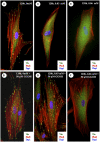A Review Into the Effects of Pamidronic Acid and Zoledronic Acid on the Oral Mucosa in Medication-Related Osteonecrosis of the Jaw
- PMID: 35224540
- PMCID: PMC8865370
- DOI: 10.3389/froh.2021.822411
A Review Into the Effects of Pamidronic Acid and Zoledronic Acid on the Oral Mucosa in Medication-Related Osteonecrosis of the Jaw
Abstract
Medication-related osteonecrosis of the jaw (MRONJ) is a growing problem without an effective treatment, presenting as necrotic bone sections exposed via lesions in the overlying soft tissue. There is currently a lack of clarity on how the factors involved in MRONJ development and progression contribute to disease prognosis and outcomes. Bisphosphonates (BPs), the most common cause of MRONJ, affect bone remodeling, angiogenesis, infection, inflammation and soft tissue toxicity, all of which contribute to MRONJ development. This article reviews the cellular mechanisms through which BPs contribute to MRONJ pathology, with a focus on the effects on cells of the oral mucosa. BPs have been shown to reduce cell viability, reduce proliferation, and increase apoptosis in oral keratinocytes and fibroblasts. BPs have also been demonstrated to reduce epithelial thickness and prevent epithelial formation in three-dimensional tissue engineered models of the oral mucosa. This combination of factors demonstrates how BPs lead to the reduced wound healing seen in MRONJ and begins to uncover the mechanisms through which these effects occur. The evidence presented here supports identification of targets which can be used to develop novel treatment strategies to promote soft tissue wound healing and restore mucosal coverage of exposed bone in MRONJ.
Keywords: bisphosphonate-related osteonecrosis of jaw; oral mucosa; pamidronate; wound healing; zoledronate.
Copyright © 2022 Bullock, Miller, McKechnie and Hearnden.
Conflict of interest statement
The authors declare that the research was conducted in the absence of any commercial or financial relationships that could be construed as a potential conflict of interest.
Figures




Similar articles
-
In vitro Effect of Geranylgeraniol (GGOH) on Bisphosphonate-Induced Cytotoxicity of Oral Mucosa Cells.Front Oral Health. 2022 Jun 20;3:892615. doi: 10.3389/froh.2022.892615. eCollection 2022. Front Oral Health. 2022. PMID: 35795156 Free PMC article.
-
Synthetic Hydroxyapatite Inhibits Bisphosphonate Toxicity to the Oral Mucosa In Vitro.Materials (Basel). 2020 May 1;13(9):2086. doi: 10.3390/ma13092086. Materials (Basel). 2020. PMID: 32369961 Free PMC article.
-
Low-level laser therapy prevents medication-related osteonecrosis of the jaw-like lesions via IL-1RA-mediated primary gingival wound healing.BMC Oral Health. 2023 Jan 10;23(1):14. doi: 10.1186/s12903-022-02678-1. BMC Oral Health. 2023. PMID: 36627695 Free PMC article.
-
Imaging modalities for drug-related osteonecrosis of the jaw (2), Overview of the position paper on medication-related osteonecrosis of the jaw and the current status of the MRONJ in Japan.Jpn Dent Sci Rev. 2019 Nov;55(1):71-75. doi: 10.1016/j.jdsr.2018.11.003. Epub 2019 Mar 18. Jpn Dent Sci Rev. 2019. PMID: 30949254 Free PMC article. Review.
-
The Role of the Immune Response in the Development of Medication-Related Osteonecrosis of the Jaw.Front Immunol. 2021 Feb 25;12:606043. doi: 10.3389/fimmu.2021.606043. eCollection 2021. Front Immunol. 2021. PMID: 33717086 Free PMC article. Review.
Cited by
-
Determinants of outcome in cancer patients with medication-related osteonecrosis of the jaw: A 19-year retrospective study.Oral Oncol Rep. 2024 Jun;10:100488. doi: 10.1016/j.oor.2024.100488. Epub 2024 May 6. Oral Oncol Rep. 2024. PMID: 38957376 Free PMC article. No abstract available.
-
In vitro Effect of Geranylgeraniol (GGOH) on Bisphosphonate-Induced Cytotoxicity of Oral Mucosa Cells.Front Oral Health. 2022 Jun 20;3:892615. doi: 10.3389/froh.2022.892615. eCollection 2022. Front Oral Health. 2022. PMID: 35795156 Free PMC article.
-
Antiresorptive agents enhance ossification of free flap reconstructions of the mandible: a radiological retrospective cohort study.Front Oncol. 2024 Jun 12;14:1401165. doi: 10.3389/fonc.2024.1401165. eCollection 2024. Front Oncol. 2024. PMID: 38933444 Free PMC article.
-
Rodents as an animal model for studying tooth extraction-related medication-related osteonecrosis of the jaw: assessment of outcomes.Arch Oral Biol. 2024 Mar;159:105875. doi: 10.1016/j.archoralbio.2023.105875. Epub 2023 Dec 26. Arch Oral Biol. 2024. PMID: 38160519 Free PMC article. Review.
-
Medication-related osteonecrosis of the jaw: Case series and literature review.Clin Case Rep. 2024 Apr 20;12(4):e8788. doi: 10.1002/ccr3.8788. eCollection 2024 Apr. Clin Case Rep. 2024. PMID: 38645603 Free PMC article.
References
Publication types
LinkOut - more resources
Full Text Sources

